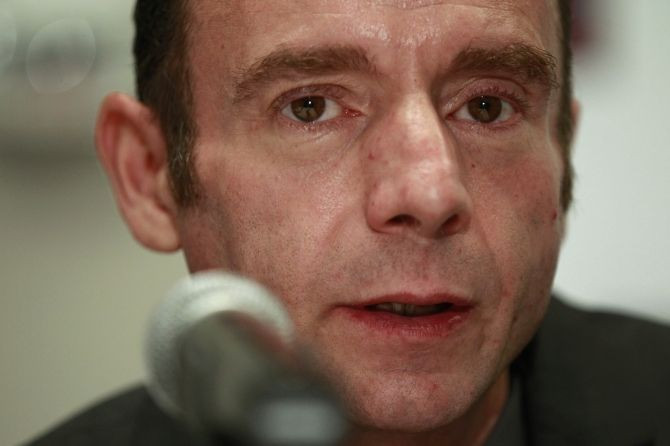In Search Of A Cure For HIV: Researchers Replicate Treatment Of The One Man Cured Of HIV, The Berlin Patient

Scientists have worked frantically since the 1980s to develop a cure for HIV/AIDS. In the years since, they developed antiretroviral therapy (ART), the most effective treatment for the range of disease, which bolsters the body’s immune by suppressing the virus’ ability to replicate. Not a single drug has been developed to cure HIV, but there’s one man who is considered to be cured of the disease. Known as the “Berlin patient,” it’s believed that a combination of treatments he got while diagnosed with leukemia contributed to his viral load being undetectable. Now, a new study has delved into these factors in an effort to find possible routes for a cure.
The case of the Berlin patient, whose real name is Timothy Ray Brown, was special. He had HIV and leukemia, a cancer of the white blood cells. So, not only were his immune CD4-T cells being attacked by HIV but the bone marrow that created them was cancerous. Brown’s treatment consisted of radiation to kill the cancer cells and stem cells in his bone marrow, and then underwent a bone-marrow transplant to help his body produce healthy white blood cells again. Soon after his treatment, his cancer had gone into remission and his HIV viral load became undetectable. Since then, he’s gone off ART, and has remained healthy.
Nobody knows exactly how all of this contributed to being cured. In an effort to better understand it, researchers from Emory University in Atlanta tested three possible ways in macaque monkeys. One possible answer to “how” may have been that the radiation killed all of the virus in Brown’s blood. Another way it could have left his body was through what’s called a “graft versus host” reaction, in which the cells produced by the transplanted marrow attacked HIV-positive reservoir cells. But perhaps the most interesting of possibilities; the researchers pointed to the marrow donor’s genealogy, which left him with a genetic mutation that disables the CCR5 gene — this gene is responsible for coding a protein that helps HIV enter human cells.
Hoping to decide which one of these three factors led to Brown being cured, the researchers took six monkeys and gave half of them the hybrid Simian-Human Immunodeficiency Virus (SHIV). The monkeys then underwent ART for several weeks, and then blasted them with radiation, followed by a bone marrow transplant taken from their own bodies before they got SHIV. By giving the monkeys their own healthy bone marrow, they could reproduce blood cells in the monkeys without the possibility of a “graft versus host” reaction.
Once the monkeys regrew blood cells, the researchers stopped ART, and saw a rapid regrowth of HIV in the control group of monkeys. Although the radiation had killed almost everything, from CD4-T cells to HIV, in the other three monkeys, two still rebounded. The third died of kidney failure, however, scientists examined its tissue and found the virus.
All of this meant that none of the monkeys had been cured. Nevertheless, the research pretty much eliminates the possibility that it was radiation that cured Brown, since SHIV still showed up in the monkeys after it. That narrows the path toward understanding what cured Brown to either the mutation in CCR5 or a graft-versus-host reaction, one of which the researchers said “played a significant role,” according to a press release. In support of the latter, the researchers also noted two other cases in which a graft-versus-host reaction resulted in three to eight months of undetectable viral loads without the help of ART.
Over a million people in the U.S. are living with HIV, and another 50,000 people become infected every year, according to the Centers for Disease Control and Prevention. Although there have been significant advances in the search for treatment, nothing is better than a cure. Studying Brown may be the only way to achieve that.
Source: Mavinger M, Watkins B, Lawson B, Lee S-T, Chahroudi A, Kean L, Silvestri G. Persistence of Virus Reservoirs in ART-Treated SHIV-Infected Rhesus Macaques after Autologous Hematopoietic Stem Cell Transplant. PLOS Pathogens. 2014.
Published by Medicaldaily.com



























